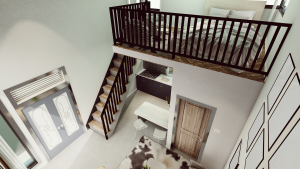Modular construction is revolutionising the building industry by offering a faster, more efficient, and often more cost-effective alternative to traditional construction methods. This approach involves constructing buildings in sections, or modules, in a factory setting before transporting and assembling them on-site. In this article, we will explore the advantages, challenges, and real-world applications of modular construction, highlighting how this innovative method is shaping the future of the construction industry.
Advantages of Modular Construction
1. Speed of Construction
One of the most significant advantages of modular construction is the speed at which projects can be completed. Building modules in a factory allows for simultaneous site preparation and construction, significantly reducing the overall project timeline. This parallel processing can cut construction time by up to 50% compared to traditional methods. For example, a hotel that might take 18 months to build using conventional techniques could be completed in just 9 months using modular construction.
2. Quality Control
Constructing modules in a controlled factory environment ensures consistent quality and precision. Factories use advanced machinery and standardised processes, reducing the likelihood of human error and ensuring that each module meets stringent quality standards. This level of control results in higher-quality buildings that require less rework and maintenance over time.
3. Cost Savings
Modular construction can be more cost-effective than traditional methods. The efficiencies gained from factory production, reduced labour costs, and shorter construction timelines contribute to overall savings. Additionally, the predictability of factory production reduces the risk of cost overruns due to weather delays or other on-site issues. These factors make modular construction an attractive option for budget-conscious projects.
4. Sustainability
Modular construction offers several environmental benefits. The factory setting allows for more efficient use of materials, reducing waste. Off-site construction also minimises disruption to the building site, preserving the surrounding environment. Furthermore, modular buildings can be designed to incorporate energy-efficient features and sustainable materials, contributing to their overall sustainability.
5. Flexibility and Scalability
Modular construction provides flexibility in design and scalability. Modules can be easily added, removed, or reconfigured to adapt to changing needs. This adaptability is particularly beneficial for structures like schools, hospitals, and offices, where requirements may evolve over time. Additionally, modular construction is well-suited for both small and large projects, from single-family homes to multi-storey buildings.
Challenges of Modular Construction
1. Design Limitations
While modular construction offers flexibility, it also comes with certain design limitations. The need to transport modules from the factory to the site imposes size and weight constraints. Architects and engineers must consider these limitations during the design phase, which can sometimes restrict creativity and require compromises in aesthetics or functionality.
2. Initial Costs
The upfront costs of modular construction can be higher than traditional methods. Investing in a factory setup, specialised equipment, and transportation logistics requires significant capital. However, these initial costs are often offset by the long-term savings and efficiencies gained through the modular approach.
3. Logistical Challenges
Transporting large modules from the factory to the construction site can pose logistical challenges. Modules must be carefully handled to avoid damage during transit, and coordinating transportation routes to accommodate oversized loads requires meticulous planning. Additionally, on-site assembly requires skilled labour to ensure that modules are correctly aligned and connected.
4. Regulatory and Approval Processes
Navigating the regulatory landscape for modular construction can be complex. Building codes and standards vary by region, and modular projects must comply with both factory and on-site regulations. Securing the necessary approvals and permits can be time-consuming and may require specialised knowledge of modular construction processes.
Real-World Applications of Modular Construction
1. Healthcare Facilities
Modular construction has been widely adopted in the healthcare sector. Hospitals and clinics often need to expand or adapt quickly to meet growing demands. Modular construction allows for the rapid deployment of high-quality, flexible healthcare facilities. For example, during the COVID-19 pandemic, modular construction was used to build temporary hospitals and testing centres in record time.
2. Residential Projects
Modular construction is increasingly popular for residential projects, including single-family homes, apartment buildings, and student housing. The ability to quickly produce high-quality, affordable housing makes modular construction an ideal solution for addressing housing shortages. Companies like BoKlok, a joint venture between IKEA and Skanska, are leading the way in modular residential construction.
3. Commercial Buildings
Commercial buildings, such as offices, hotels, and retail spaces, are also benefiting from modular construction. For instance, Marriott International has embraced modular construction for some of its new hotels, reducing construction time and minimising disruption to surrounding areas. Modular offices and retail spaces offer the flexibility to adapt to changing business needs, providing a versatile and efficient solution for commercial real estate.
Conclusion
Modular construction is transforming the building industry by offering a faster, more efficient, and sustainable alternative to traditional methods. Despite challenges such as design limitations and logistical complexities, the advantages of modular construction make it a compelling choice for a wide range of projects. As technology and techniques continue to advance, modular construction is poised to play a significant role in shaping the future of architecture and construction, delivering high-quality buildings that meet the demands of a rapidly changing world.







